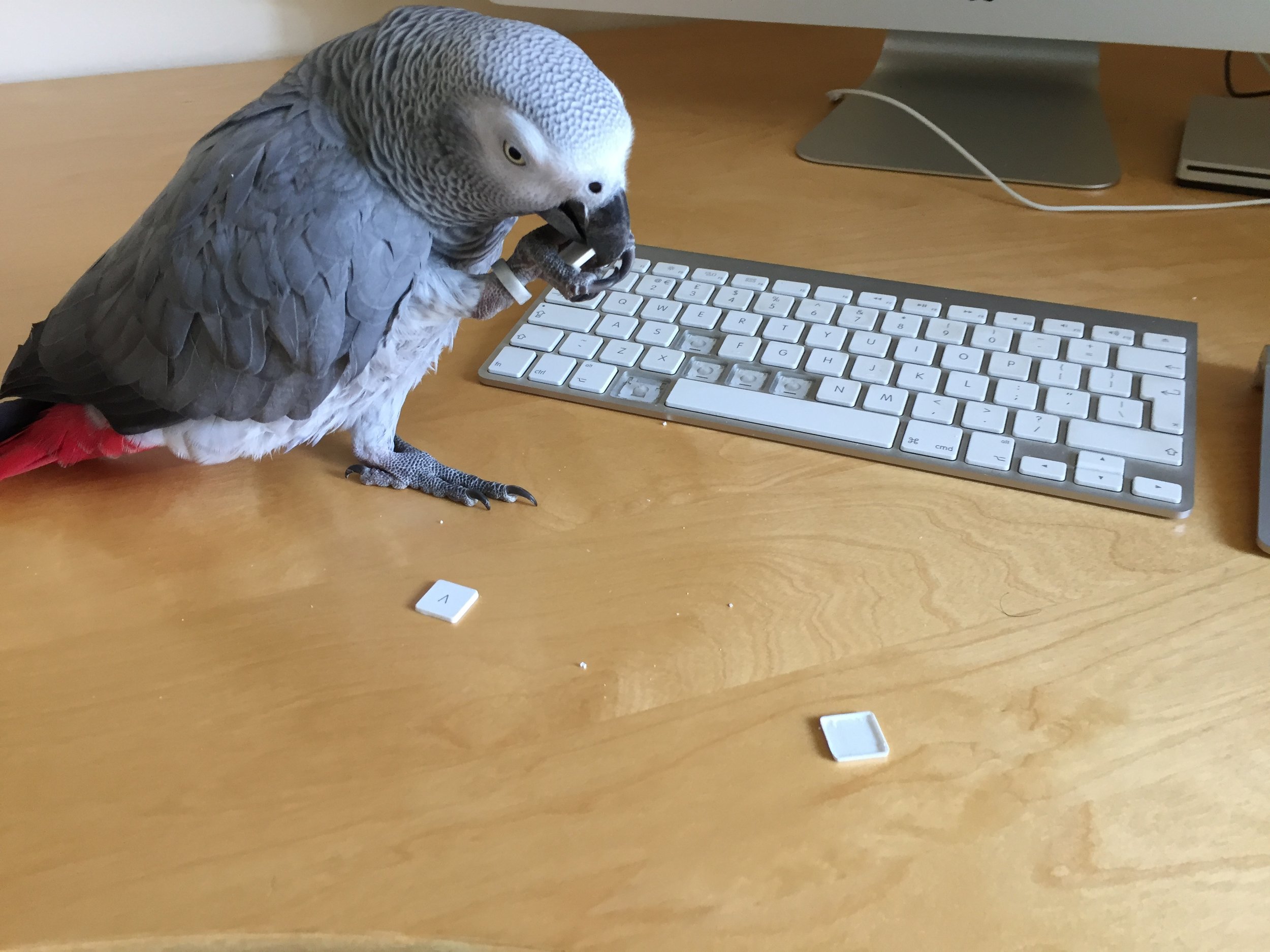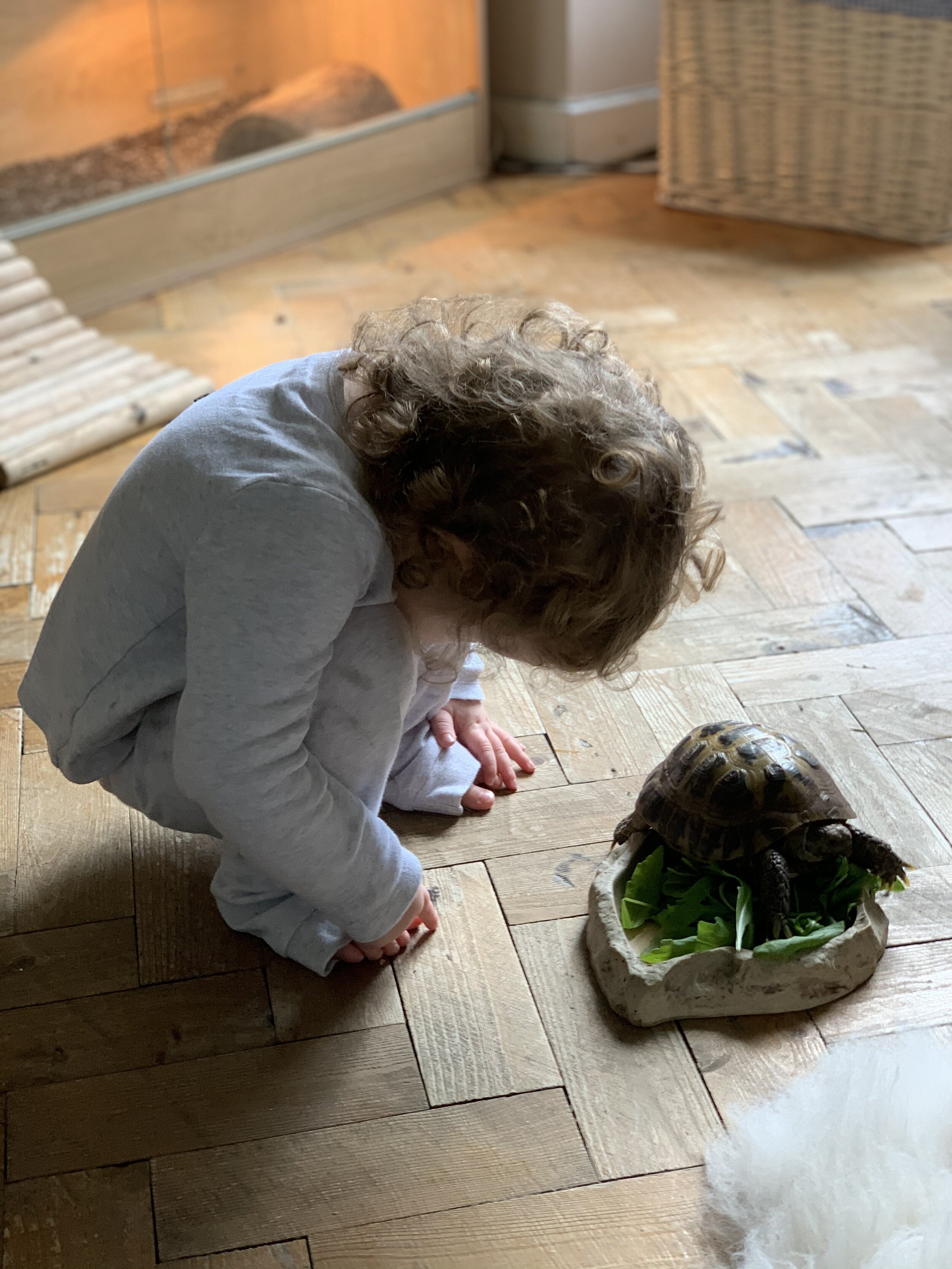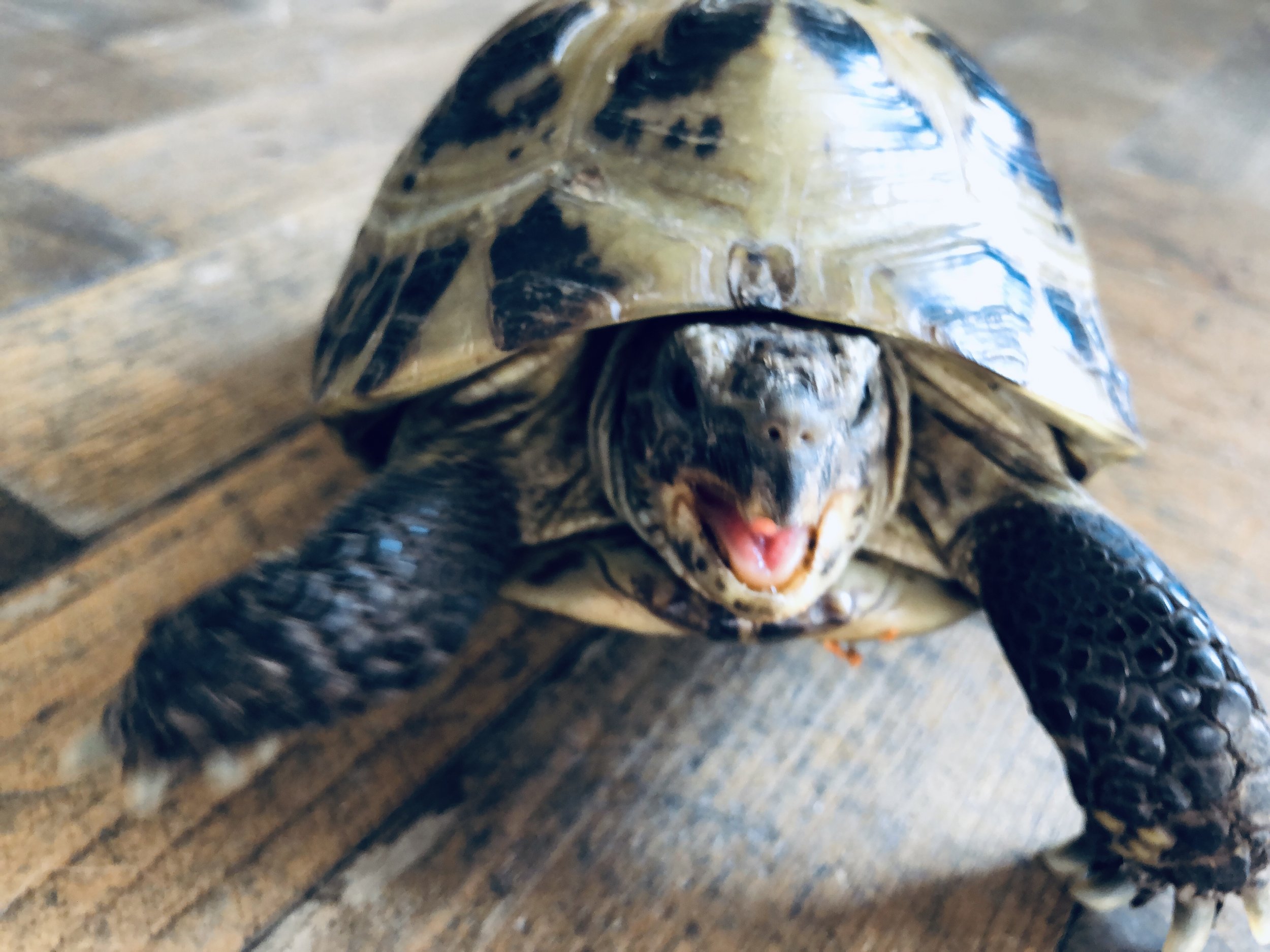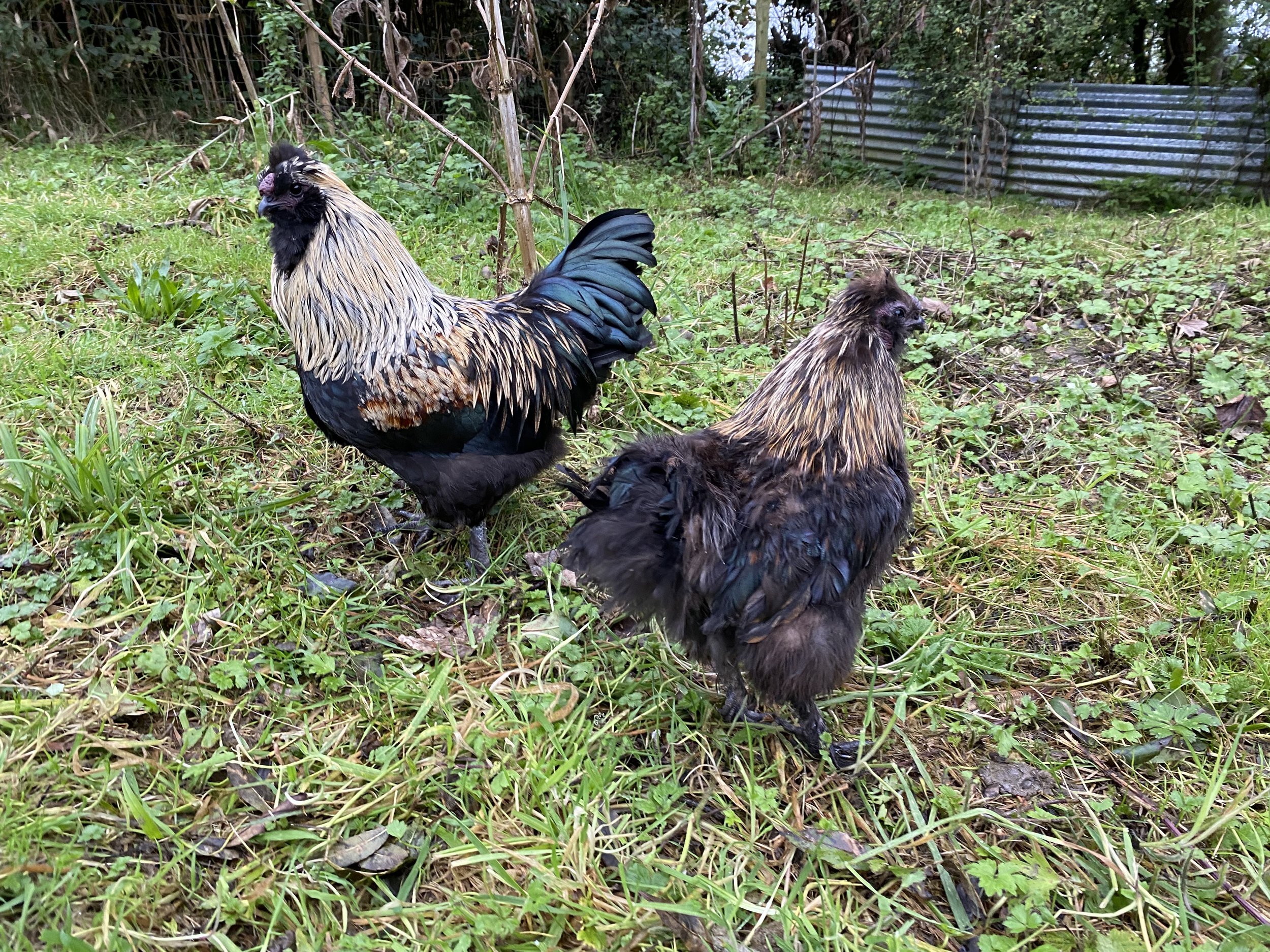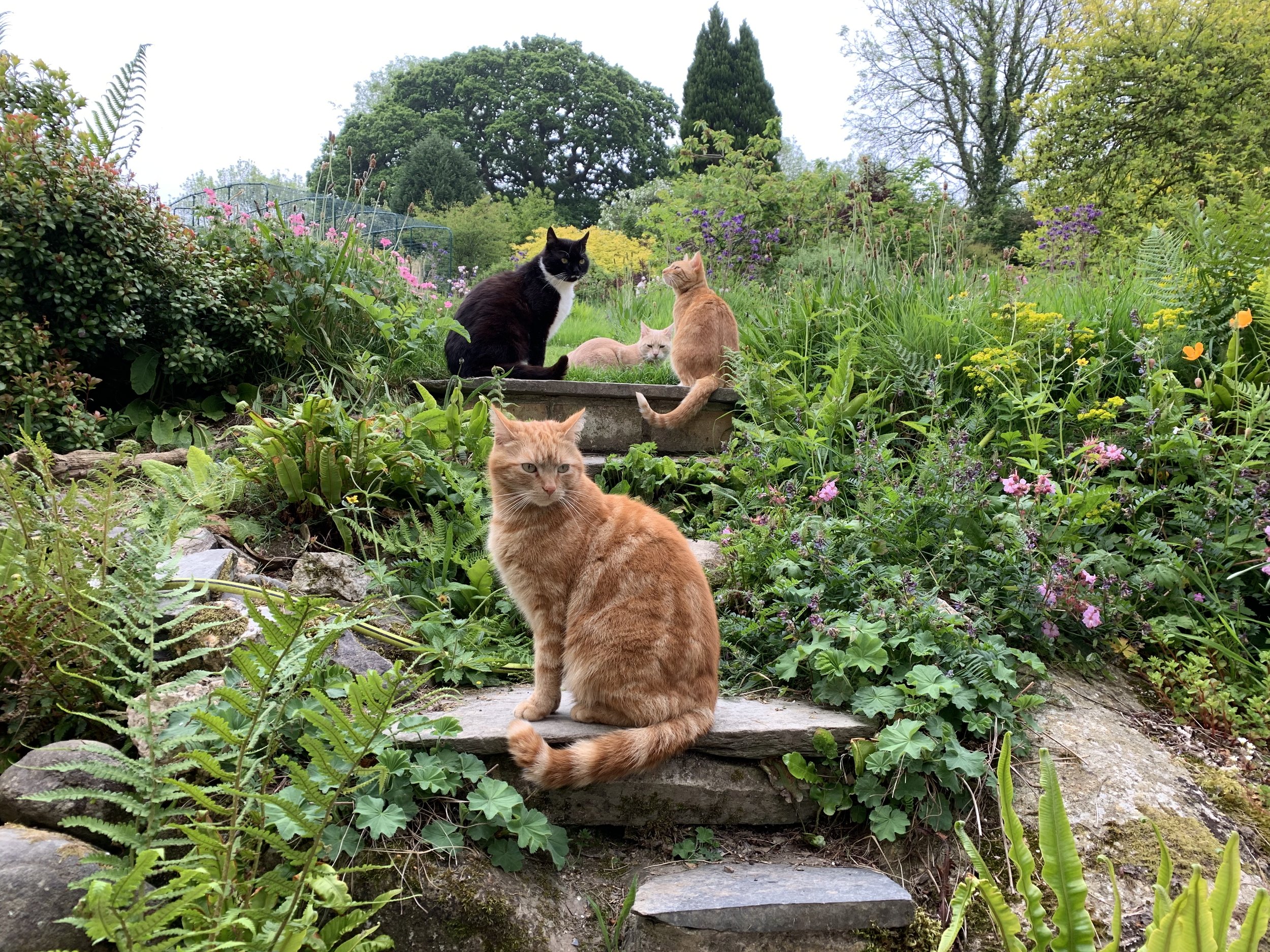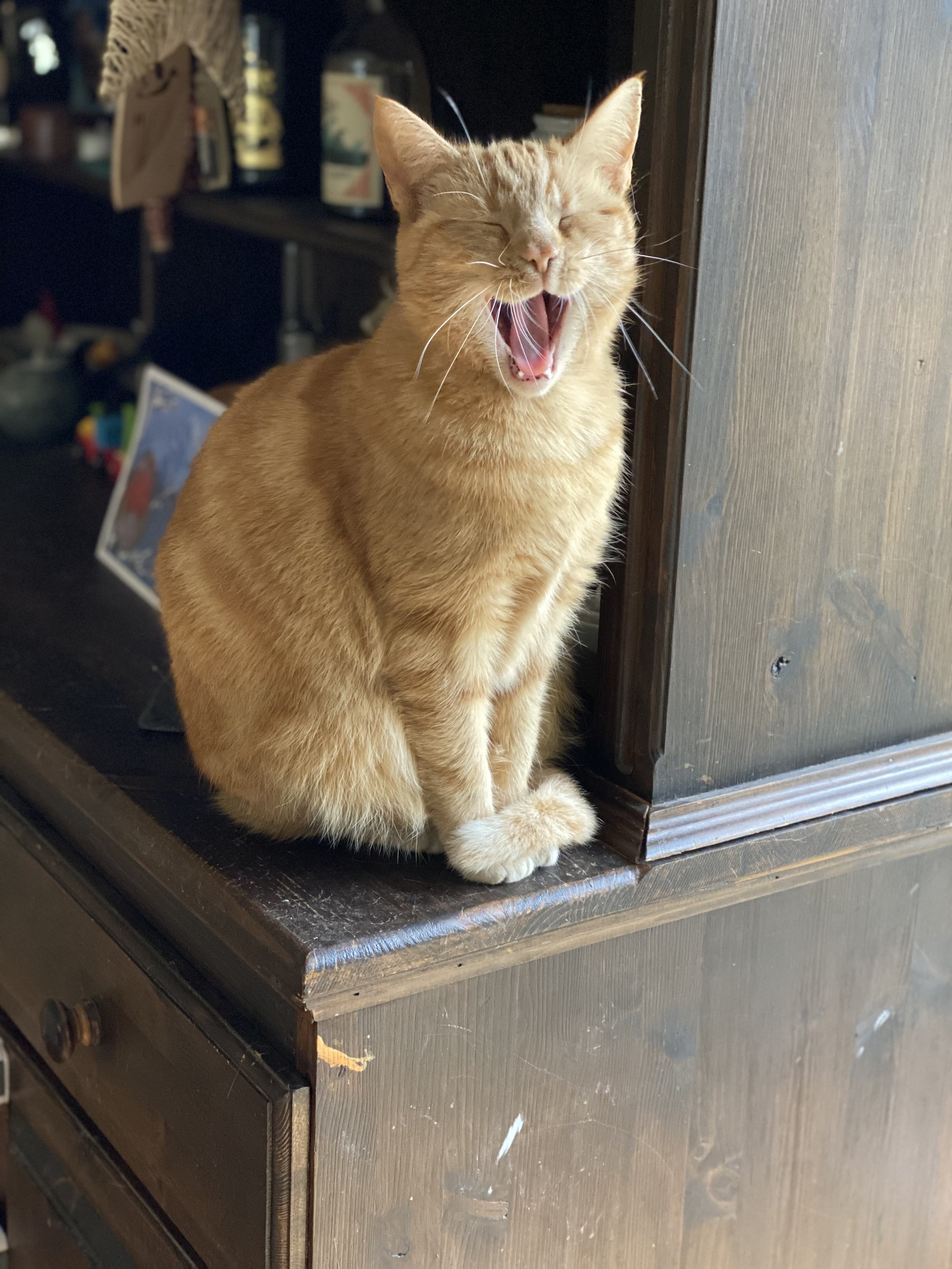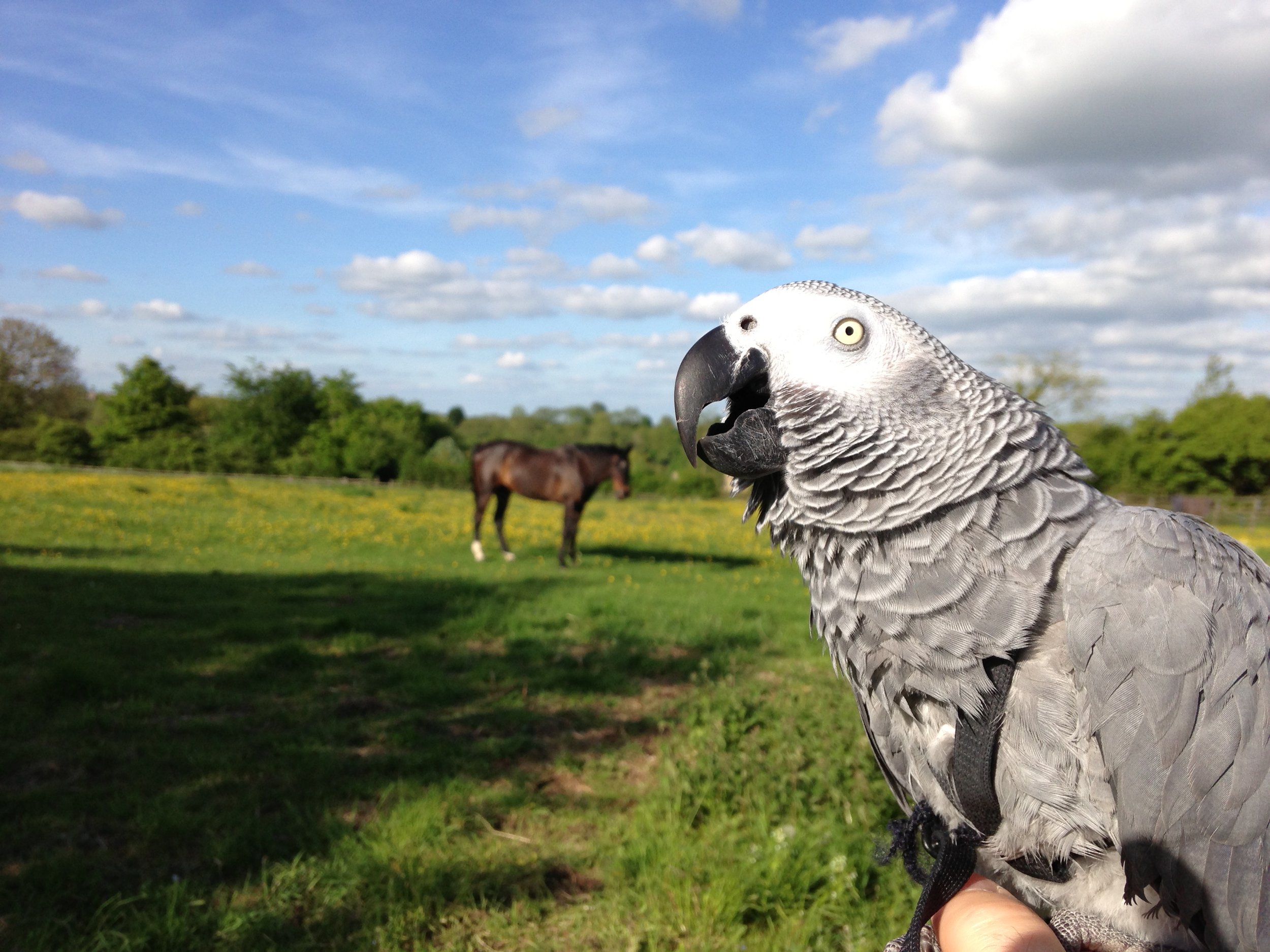
The Other Sanctuary Residents
The Hairy Pig Bros
We rehomed Wilym and Boris back in 2018. Their previous owner had intended to butcher them, so had deliberately not handled them so as not to get too close to them.
Consequently, when they arrived these boys were quite nervous and untrusting of humans. We spent quite a lot of time just being in the same space as the pigs - initially at a distance, and then gradually closer and closer, letting them get used to us and our movements in their own time.
Gradually they came to trust us and come up to us willingly - indeed these days it is hard to escape geing used as a piggy scratching post if you’re in their enclosure!
These boys are life residents at the sanctuary, helping to remove invasive non-native plants from the land naturally. They are rotated regularly so as to simulate their natural foraging behaviours, and get access to our woodlands to maximise their natural piggy foraging behaviour.
Wilym and Boris are believed to be a Mangalica (hairy) Kunekune (small) cross breed.
Chopsy the African Grey Parrot
Chopsy is a rescued African Grey Parrot. She is 18 years old and company director Matt’s loyal familiar (despite him never wanting a parrot).
When Chopsy first came to live with us she could not fly as her primary flight feathers (the long wing feathers) had been constantly clipped, so she had never learnt how to fly and would walk everywhere. It took around a year for these to regrow, and afterwards Matt set about teaching her to fly.
This involved teaching Chopsy to identify safe ‘landing pads’ - targets that she was familiar with that she could aim to land on as Matt gently propelled her into the air - first from very close by, and then gradually extending the flight distance. Initially Chopsy would glide onto the landing pads, until over the months she built up strength in her wings and was able to voluntarily fly wherever she wanted.
Wild African Greys enjoy having washing in water, and it is known to be beneficial for parrots to be exposed to water on a regular basis. At first Chopsy would not go near water - even in a very shallow plate. Matt got her gradually accustomed and desensitised to water over several months by taking her into the shower with him - first sitting on the sink, soaking up the water moisture and then sitting on the side of the bath. Such was her desire to be next to Matt, that eventually he was able to walk under the shower with Chopsy sitting on his shoulder, and this is where she remains to this day - every day enjoying a shower and singing away on Matt’s shoulder.
Chopsy loves making a noise, and assists with the gradual removal of any wooden furniture via her beak. Chopsy’s special skill is eating keyboards.
Bowser
Bowser came to live with us about eleven years ago after he got divorced from his then-girlfriend, and lost his house in the fallout. His romantic advances were not appreciated at the time and he was cast out. He is the only thing in life that the geese and parrot are scared of…Bowser is the bird terroriser.
Photo by Macsen - age 4
Free Range Rescue Roosters
Terry, Tony & Trevor crow all day and they crow all night. Some people might find annoying, but to us it is quite relaxing…like listening to wolves howling. Small, feathery wolves, with big appetites and bigger personalities.
The egg industry is notorious for its cruelty to male chickens. They don’t lay eggs, so they don’t serve a purpose in the commercial world. Consequently most cockerels are culled the moment they are born. With the chances of a male chicken hatching being 50/50, that’s a vast number of murders at the hands of the egg industry.
We try to give roosters a second chance here. Over the years, we have kept dozens of free range boys. If you keep hens and need a male companion, let us know - we usually have plenty to pick from!
Rescue Hens
Over the years we have accumulated a large number of rescue hens - the elderly, sick, or unwanted. With a little love and care these girls can become lively productive egg layers - although we are quite content for them to live out their lives here free ranging and not laying a single egg.
The Feral Cat Colony
We have a legion of (formerly) feral cats living with us - most have now given up their wild former lives and moved into the main house. When we arrived here, most of the cats were in a bad way and needed veterinary attention. We got them all up to full health and neutered. They reward us by keeping rats out of the hay barn and by taking up most of the space on the bed. Most of the cats spend their time lounging around in impossible places, such as kitchen shelves, on top of the fridge, on top of the log store, or in very small plant pots.
Over the years, we have taken in further feral cats and kittens from neighbouring communities, working with local vets to neuter them and ensure that they are healthy. A major challenge with feral cats is feline immunodeficiency virus (FIV) - ‘cat aids’. It is similar to human HIV, in that it attacks and weakens the immune system and there is no known cure. Nevertheless, cats with FIV can live long and fulfilling lives if the virus is managed appropriately. Male cats spread FIV to each other when fighting, and therefore it is particularly prevalent in feral colonies where resources are less available than with domestic cats (and thus fights more common). Female cats tend to catch FIV from males during mating.
Some of the cats here include:
Lenny, Trotsky, Hieronymus (Ronny), ‘Pwt’ (all ginger), Ember (rare ginger girl), Pangur (apricot ginger), Bartholomew Roberts, Jeremiah Johnson (black), Rasputin (ginger / white), Tatiana (tortoiseshell), Pablo Sloberdon Shmabianski Mwstas (black & white), Napoleon (black) & Hans Gruber (ginger / white).






